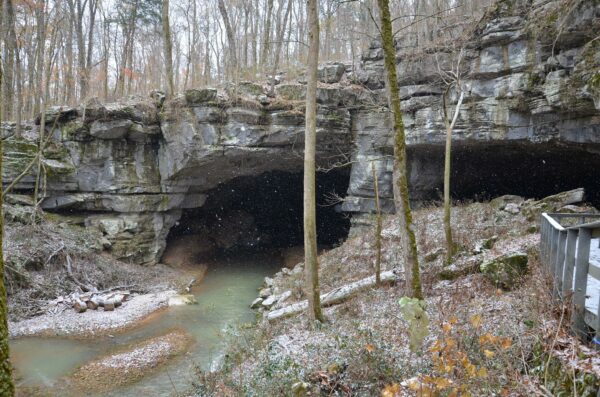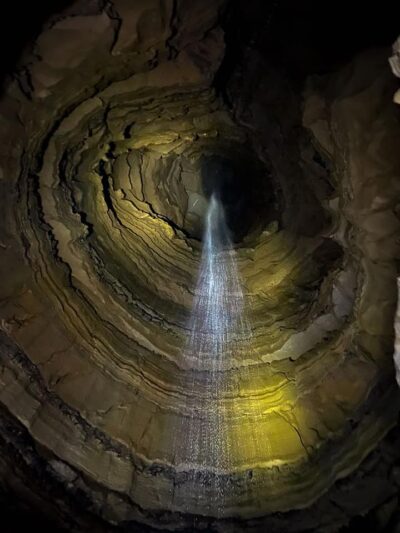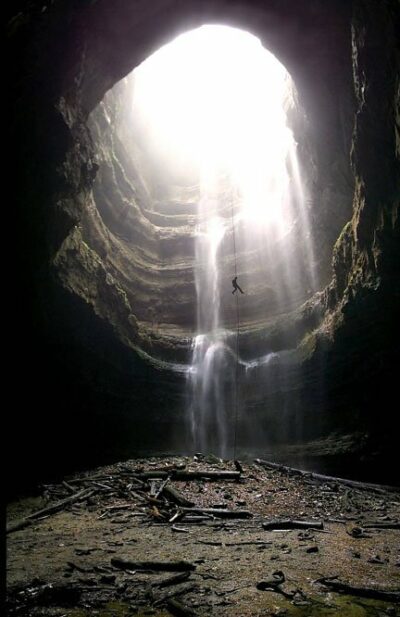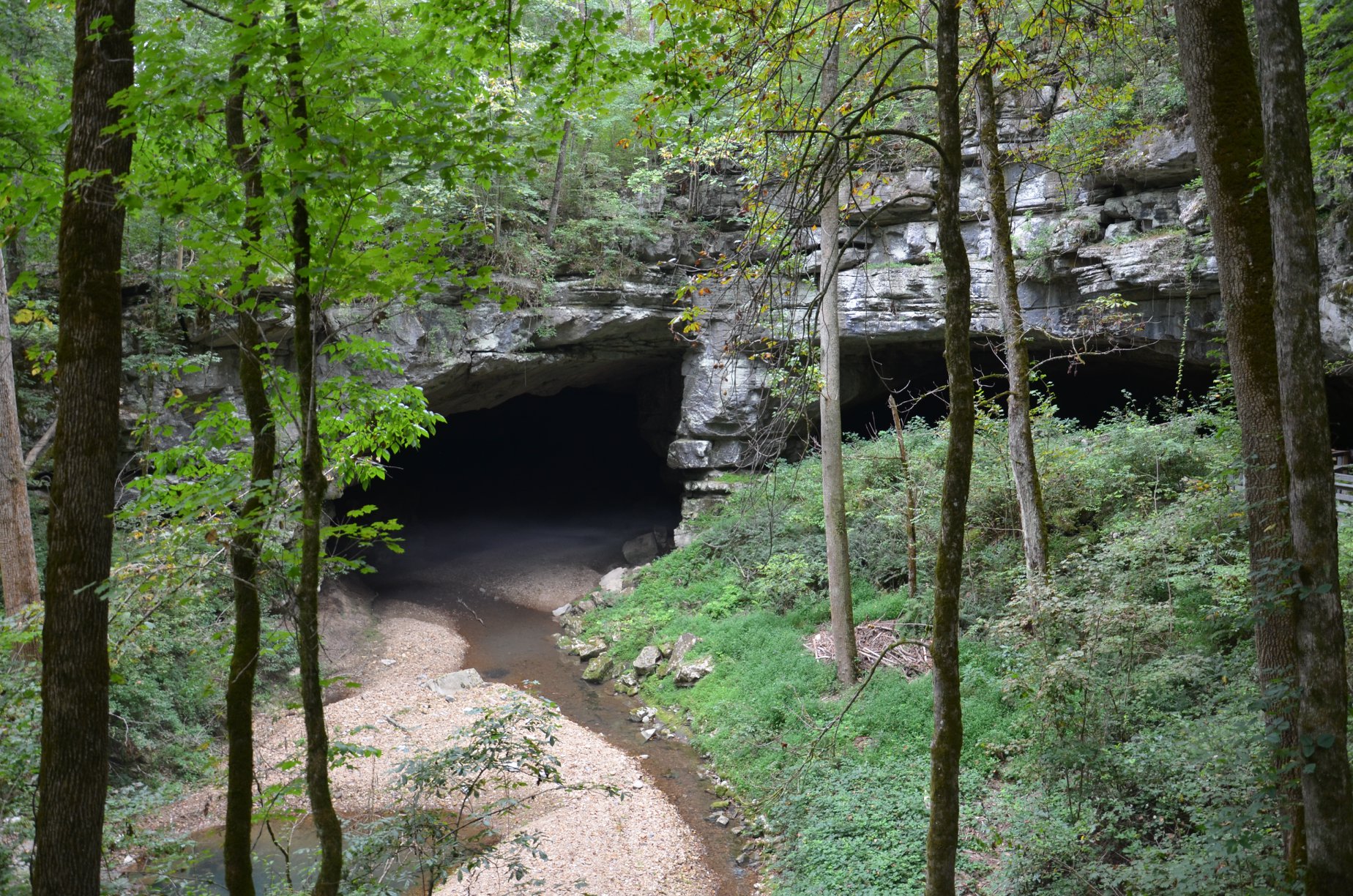Tucked into the northeast corner of Alabama, Jackson County is a caver’s paradise. The county of just over 52,000 people is home to 3,537 charted caves, meaning there is roughly one cave for every 15 people. The county also has more caves per square mile than any other location in America!
In addition to being natural geological wonders, Alabama’s wonderfully mysterious caves also have significant scientific and historical value. They’re home to more than 1,000 species, 95 percent of which are considered vulnerable. They also contain historic and archaeological artifacts, from prehistoric bones to cave writings from our country’s Indigenous people. In many ways, stepping into a cave is like stepping back in time. And on milder winter days, there’s no better adventure to be had than spending an afternoon exploring one.
When it comes to caving, there are two main categories: horizontal caving and vertical caving. Horizontal caving doesn’t require technical training or equipment, but it ranges in difficulty based on the grade and materials of the surfaces traversed. For horizontal cavers, experts recommend headlamps, boots, and gloves. Vertical caving, also called pit caving, is akin to falling into a large pit rather than walking into a hole in the wall. It requires special training and equipment to descend by rappelling. Vertical cavers need rope, rope grabs for ascending, and descenders to apply friction to the rope.
Whether you’re an experienced caver or just getting started in the sport, Jackson County has an ideal cave for you to explore. Keep reading for our guide to beginner, intermediate, or expert caving in the area. For more information on cave safety, history, and conservation, head to saveyourcaves.org.
Note: All beginner caves are horizontal caving. Intermediate caves give the option for horizontal caving or vertical caving, and expert caves are only accessible through vertical caving. Several caves require a permit to explore. Permits can be obtained via Save Your Caves.
Beginner

(Russell Cave National Monument/Facebook)
Russell Cave National Monument
This archaeological site has one of the most complete records of prehistoric cultures in the Southeast. Though you can’t actually enter this cave, it’s a great visit for history buffs who can see artifacts from more than 10,000 years of use in a single place. In addition to seeing the cave, the park also offers ranger demonstrations of prehistoric skills like throwing an atlatl, fire starting, and flint-knapping. A 1.2-mile hiking trail or 0.2-mile nature trail (that are both pet friendly) can round out your visit.
Want to see something truly mind-blowing? Book a guided Cave Tour at Cathedral Caverns. You’ll enter a 126-foot-wide and 25-foot-high opening, then traverse through the massive cavern to see some of the world’s most beautiful stalagmites and stalactite formations, including Goliath, one of the world’s largest stalagmites at 243-feet around and 45-feet tall.
Alabama’s 15th longest cave, Limrock is a three-mile stream cave with large walking passages, beautiful rooms, and impressive formations. Ideal for hiking, photography, and birdwatching, it’s easily accessible via a short five-minute walk from a gravel parking area to the cave entrance. It requires a permit for day exploration and is ideal for beginners so long as they heed warnings about flooding during rainy weather conditions.
Intermediate

Tumbling Rock Cave (Angela Thomas/Facebook)
You can spend an entire day getting lost in the six miles of surveyed passages inside Tumbling Rock. The horizontal caving location features a large interior passage accompanied by a stream running its entire length. The main passage is intersected with smaller passages leading to cavernous rooms. Inside the rooms, find large piles of rock, also known as breakdown. For those who are down to get a little dirty, several passages narrow into sandy crawls. Stalagmites and stalactites, as well as the remains of a Civil War-era mining operation, are also sprinkled throughout the cave.
Stephens Gap Cave Callahan Cave Preserve
One of the most photographed caves in the U.S., Stephens Gap is ideal for every level of caver, from beginners to experts looking for a thrill. For horizontal cavers, a ¾-mile trail intersects ledges and a 143-foot pit that more experienced vertical cavers love. The walk-in passage intersects the pit about 50-feet above the floor, so all cavers should exercise extreme caution when approaching. Permits are required for all entering the cave using vertical caving equipment.
Kay Hill Deen Fern Cave Preserve
There are five entrances to this unique cave. Four are in the Fern Cave National Wildlife Refuge, and the last, which is known as Fern Sink or Surprise Pit, is operated by Save Your Caves. Getting to the cave starts with a three-mile drive on an unpaved road, followed by a strenuous uphill hike. To enter via Surprise Pit, experienced vertical caving experience is required. Fun fact: One section of Fern Cave is the largest gray bat hibernaculum in the country.
Expert

Neversink Falls (alabamawaterfalls.com)
Arguably Jackson County’s most famous cave, Neversink has been featured in National Geographic several times over. Its lush fern-covered ledges, natural waterfalls, and stunning 162-foot open air drop create an otherworldly wonder that’s a must-see for all nature lovers. For those who want to see the cave from above, a 0.6-mile hike up a steep hill will get you there. Experienced cavers can then make the descent into the pit using two established rigs at the edge of the cave.
A 227-foot entrance pitch leads to the bottom of this classic pit cave. Only accessible by vertical caving, there’s more than a mile of cave to explore once you reach the bottom. A permit is required to visit, and camping is allowed.




